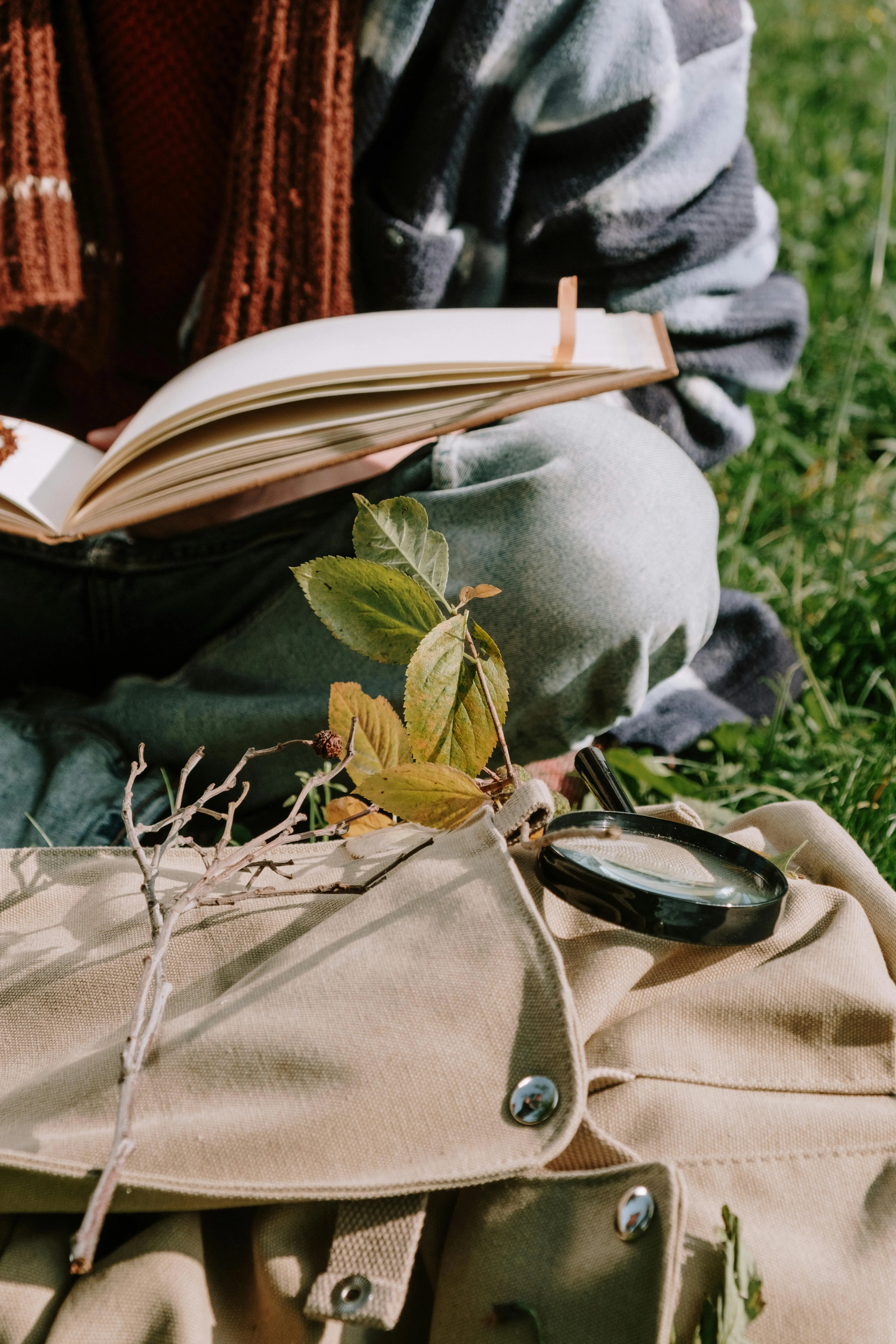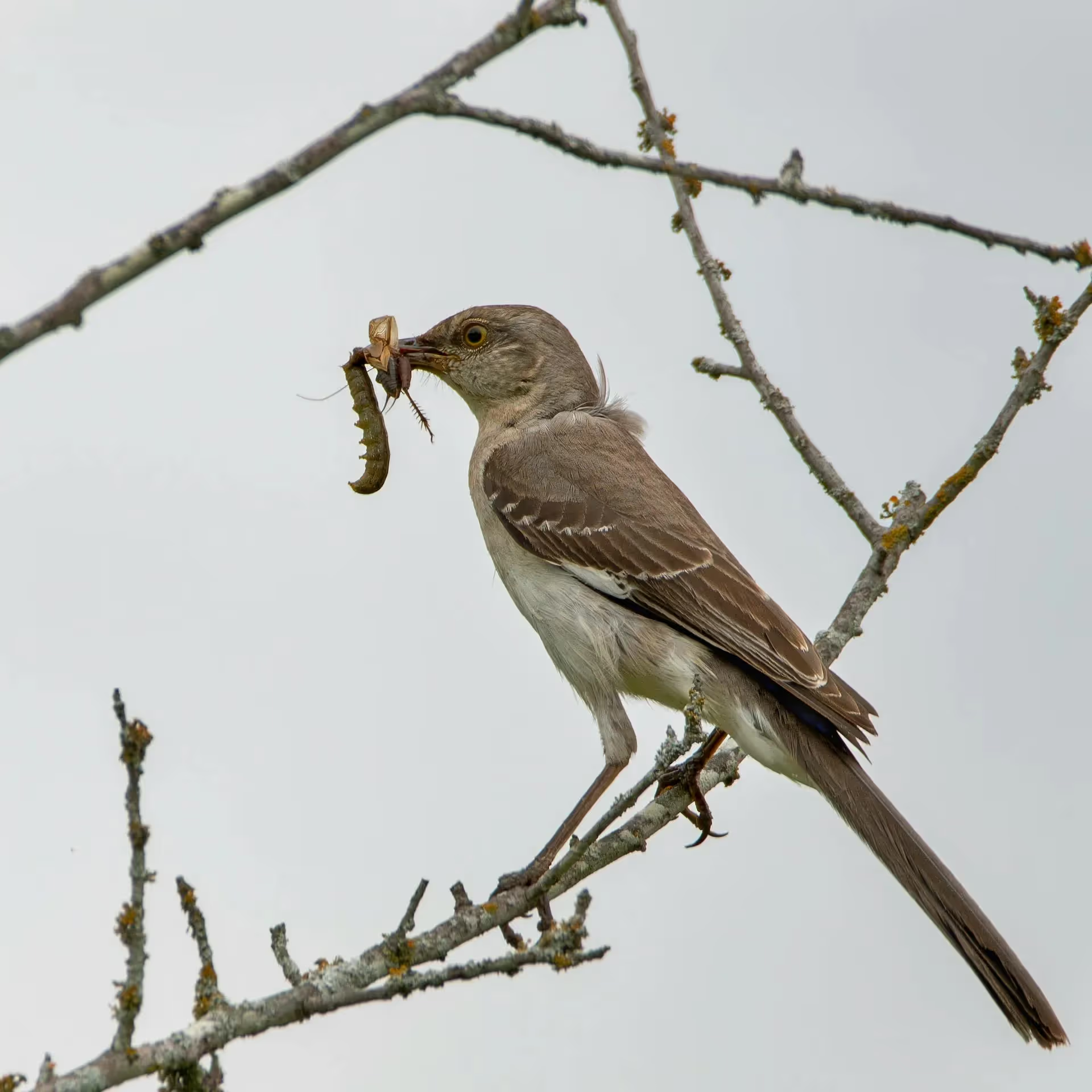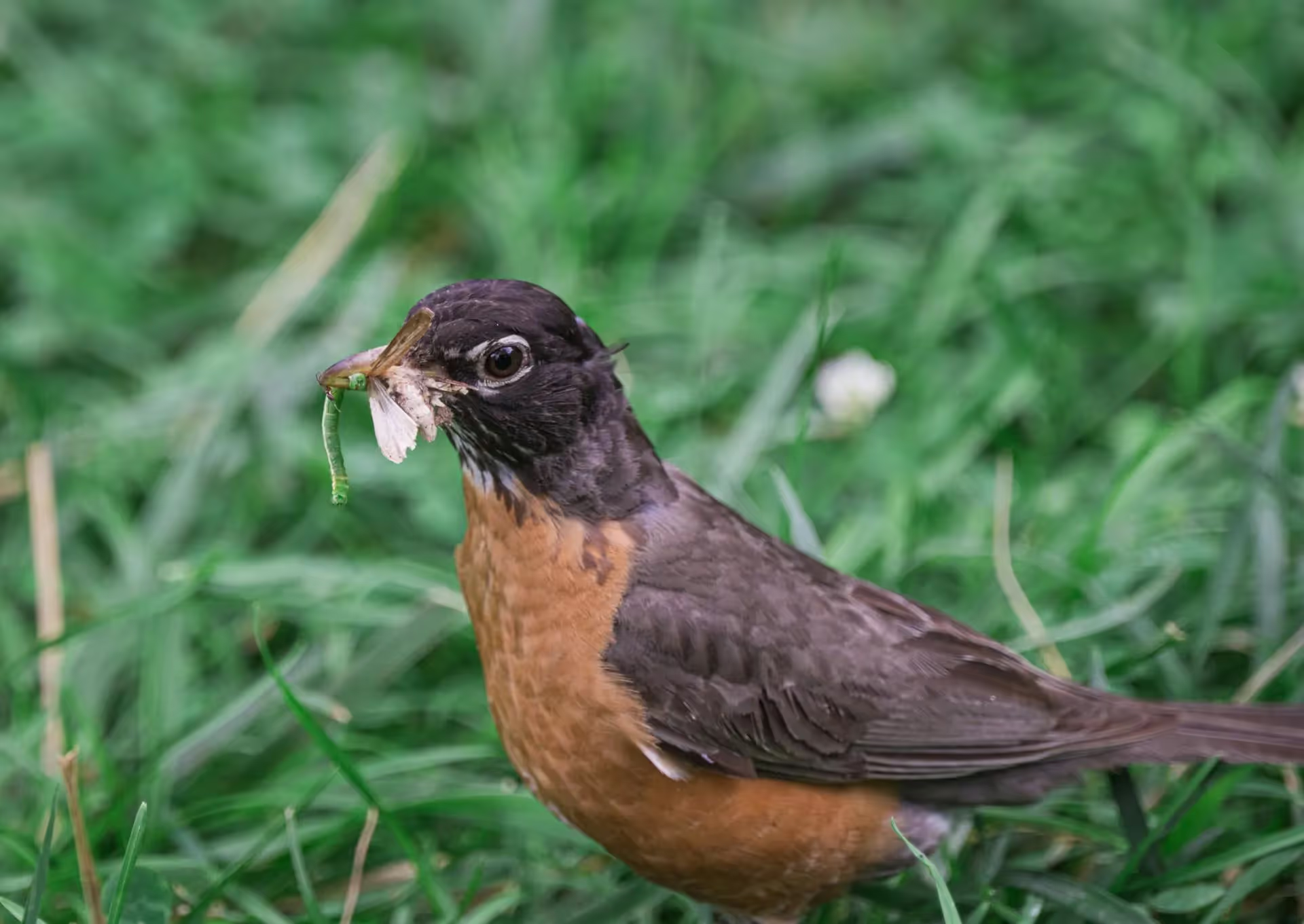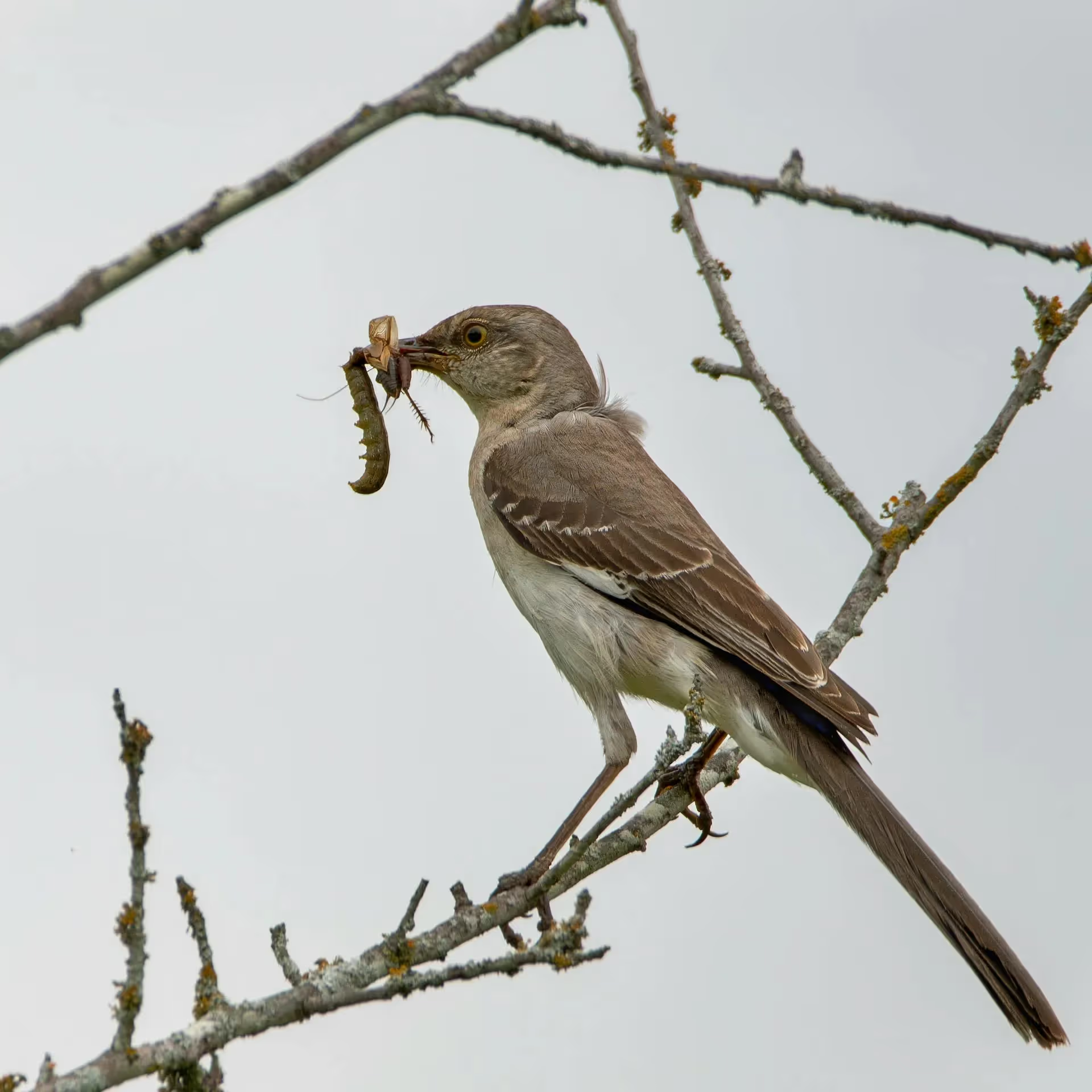
Be a Land Steward.
Sign up for Greenhouse Gases -
a weekly-ish newsletter that will teach you the science behind regenerative gardening, with action steps to help you make a difference in your backyard.

Sign up for Greenhouse Gases -
a weekly-ish newsletter that will teach you the science behind regenerative gardening, with action steps to help you make a difference in your backyard.

When it comes to garden pests, I think the hardest part about controling them isn't them - it's us.
Yes, garden pests can cause damage to crops in devastating ways. But what would change in your garden if, instead of seeing pests as the enemy, you shifted your perspective to look at these crop-munching critters as an opportunity?
Here's what I mean: Instead of trying to eradicate the pests (which honestly is next to impossible), I found a way to see the pests as an opportunity to nourish my local wildlife. Namely, birds.
When I started thinking about pest solutions from a regenerative gardening and permaculture design standpoint, I realized that a major aspect is ecosystem balance.
Birds are natural predators of common garden pests, which means they can organically help protect frequently targeted species like cabbages and lettuces.
My own grandfather built bird houses on tall poles to attract birds into his garden. This method is not just a relic of pre-WWII gardens, but a remains a solution for modern organic gardens like mine.
I've experienced firsthand the balance and vitality birds bring, echoing the practices of those early farmers (and my grandpa) who understood the connection between wildlife and crop health.
Instead of being frustrated with ruined crops, you’ll be supporting conservation efforts by providing a habitat for local bird species. I’ve even been able to get better about identifying some of the native birds in my area, since I can observe them more closely in the garden.
What if your garden’s pest problem is an opportunity to actually help your local wildlife?

In the table below, you'll find a detailed list of common plant-eating pests and the winged allies that enjoy them as a feast. From aphids to caterpillars, birds are helping maintain the ecological balance in your garden.
Each entry is backed by research, offering you a reliable guide to understanding how integrating birds into your garden can reduce the need for chemical interventions and enhance the natural beauty of your space. Take a look and see how you might invite these beneficial birds into your own garden ecosystem.
Here’s a list of plant predators, and the kinds of birds that eat them.
"Humankind has not woven the web of life. We are but one thread within it. Whatever we do to the web, we do to ourselves. All things are bound together. All things connect." - Chief Seattle
In my own organic garden, I have an abundance of brassica-loving pests. Slugs, cabbage moths, cabbage loppers, aphids - you name it. Of course, I also happen to love brassicas, with broccoli being the one plant that I just can't seem to grow enough supply.
I won't lie - the first few years of growing brassicas was rough. There was no garden there before, just pasture.
I tried all of the common tactics - insect netting, beer traps, plopping pests into a bucket of soapy water - but nothing seemed to cause a significant dent in the pest population.
That all changed with a couple simple additions to my garden: An elevated bird bath on one side, and a hanging bird feeder on the other side. These two features, along with bird-friendly plants like sunflowers and echinacea, made a noticeable difference in the health of my brassica crops.
It wasn't a quick fix, like how pesticides can be. But the balanced ecosystem was worth the wait.
One thing that’s really helped me to change my perspective on garden pests is that they are (mostly) indicative of a healthy environment.
It’s true that some herbivorous invertebrates (like gray field slugs in the United States) are invasive species.
But even invasive species in your garden provides support for other wildlife higher up in the food chain.
Think about it like this: if you were hungry and wandering around the countryside, would you stop at the highly manicured pristine lawn, or a local pub?
Obviously, the local pub is where the food is.
Now, it’s the same for birds. In a garden where pesticides are heavily applied, you’ll rarely see birds visiting - they want to eat the aphids that now have been eliminated.
In fact, studies have shown that birds are not as helpful with pest control when the pest population is low.
Interestingly, when plants are attacked by insects, the plants release scents that the birds can smell. Higher pest populations make that scent more apparent, which attracts birds.
In this instance, it’s all about balance. As a gardener, you don’t want so many pests that your crops are decimated. But at the same time, you don’t want a garden totally free of herbivorous invertebrates, because that indicates that you’re doing all the work to control those pests - or worse, using harmful chemicals that have a negative impact on the environment.
Nothing’s worse than noticing that an area of your garden that you’ve been dutifully tending has been decimated by garden pests.
Whatever the pest is - maybe cabbage loppers chewing away at your broccoli sprouts, or slugs spreading slime over your salad greens - it’s devastating, especially for organic gardeners like me.
We can benefit nature twice over when we let birds help us around the garden. Not only do we reduce the need for any kind of pesticide, but we also create a healthier ecosystem habitat for local wildlife.
Birds aren't just a few insects here and there, either. As mentioned above, chickadees will gather at least 6,000 caterpillars as they raise their young. Moreover, barn swallows will eat an average of 60 insects an hour.
While birds are undeniably effective at managing garden pests, their contributions extend far beyond this role. Here are some other ways that they create a vibrant and balanced ecosystem:
As you can see, more birds in your backyard means a more resilient and flourishing garden space. Just as birds help manage pests, these additional ecosystem services show their value as holistic partners in your gardening journey.

If we change our approach towards garden pests, we find that they hold a hidden value: supplying birds with the necessary food sources to thrive.
We've explored how birds not only control pests in a way that is both low-maintenance for gardeners and non-toxic for the ecosystem. They offer an ecosystem service that can transform your garden to yield productive harvests.
As you consider the insights shared, observe the dynamics in your own garden and notice the natural aid that birds provide.